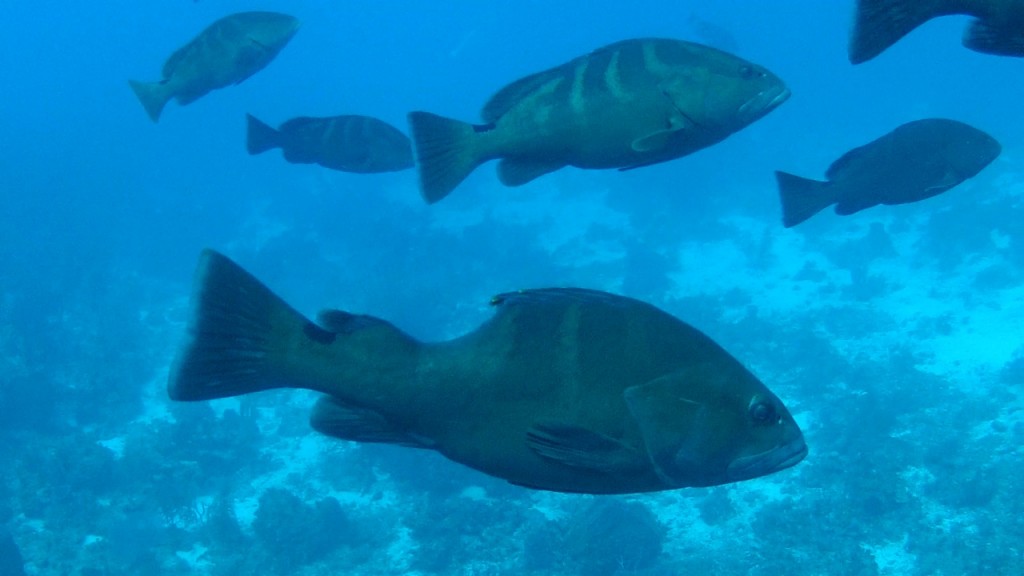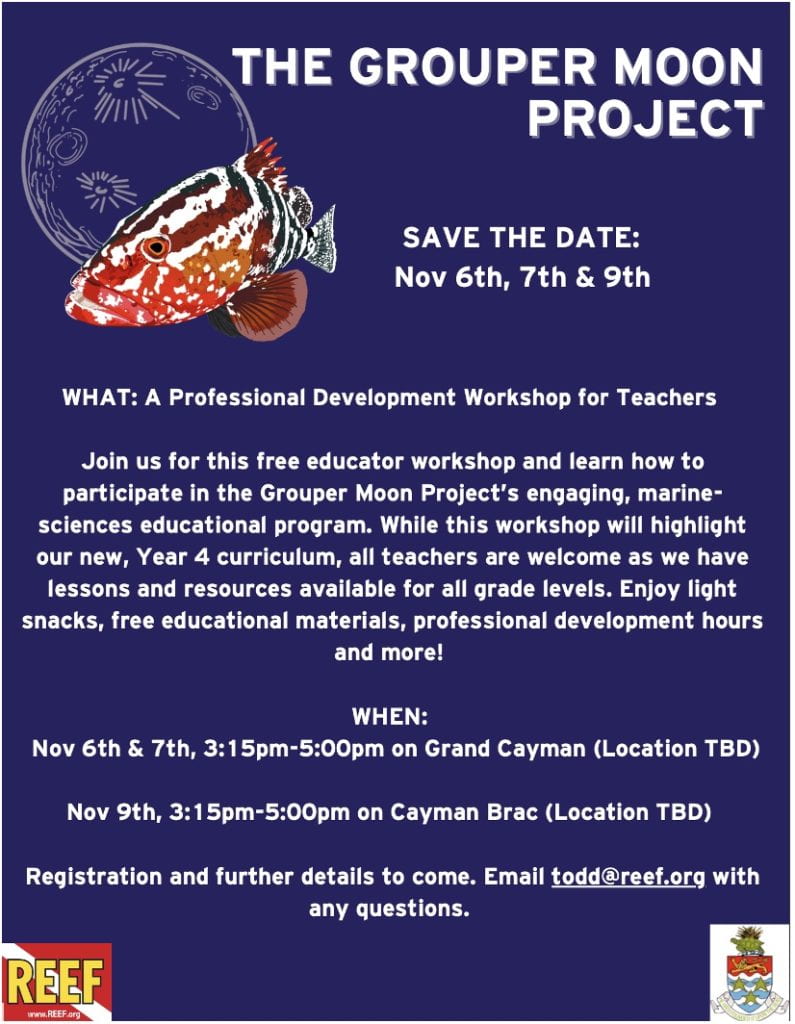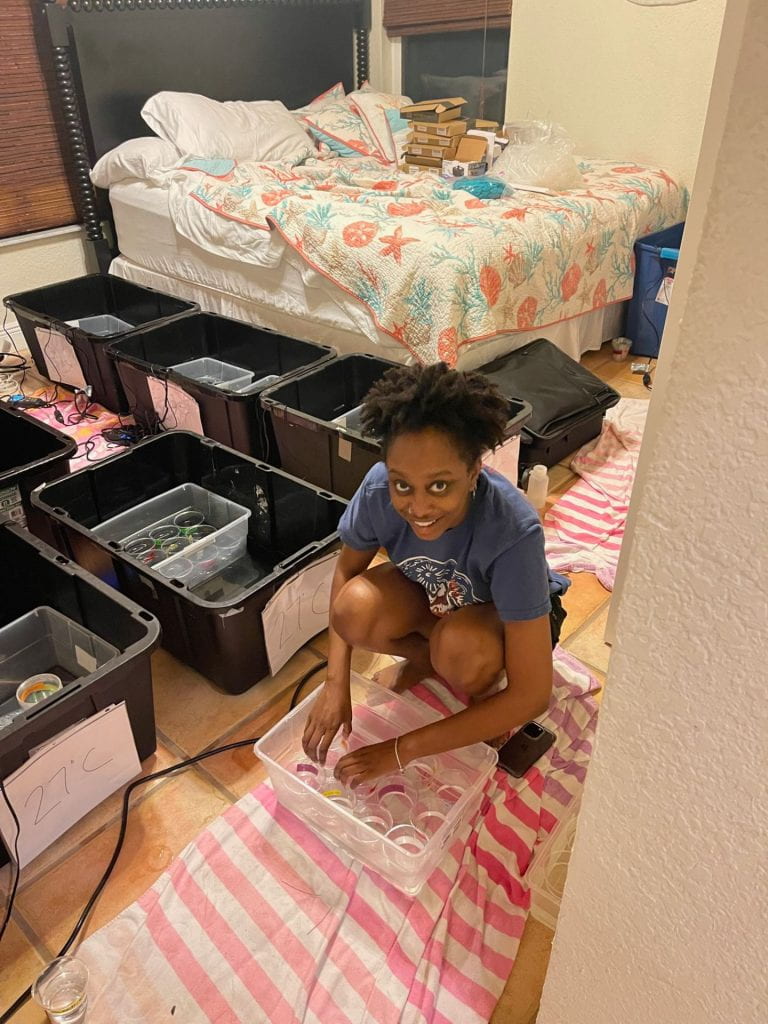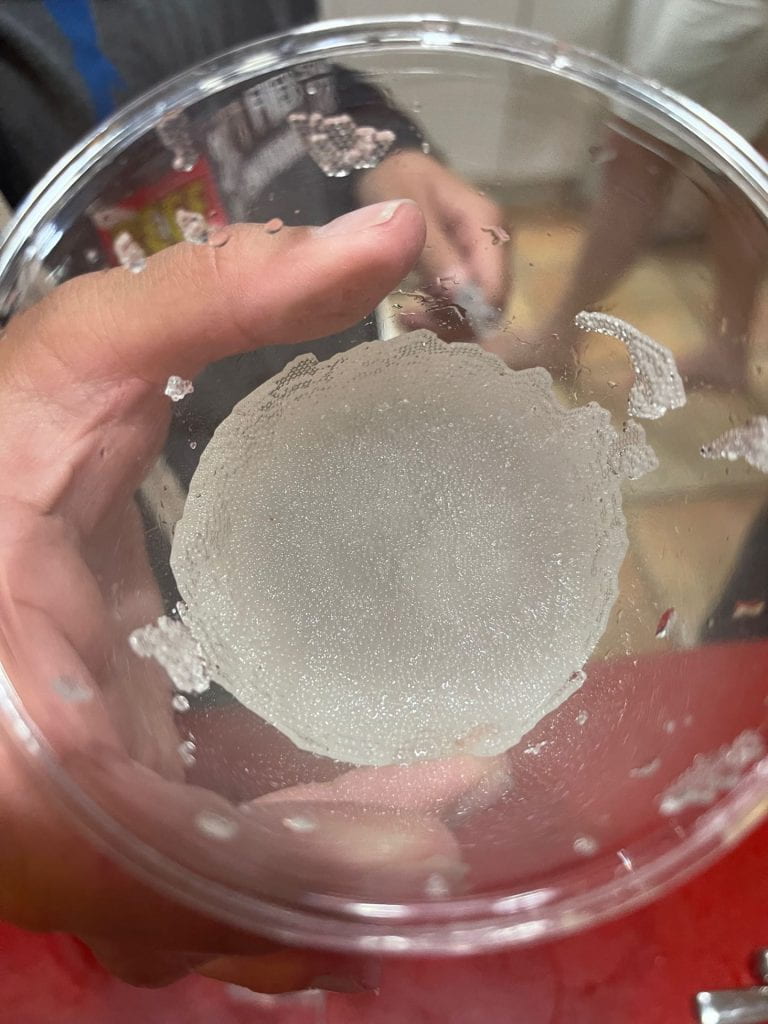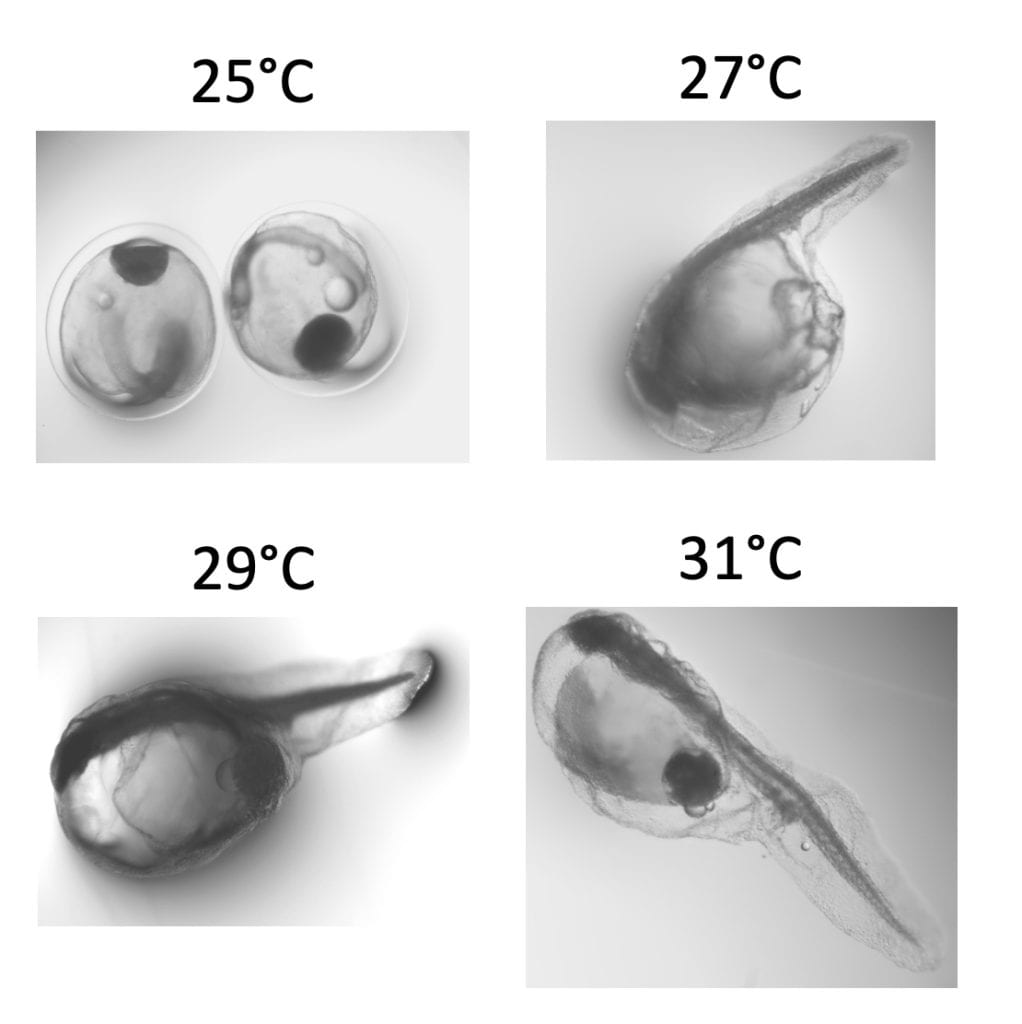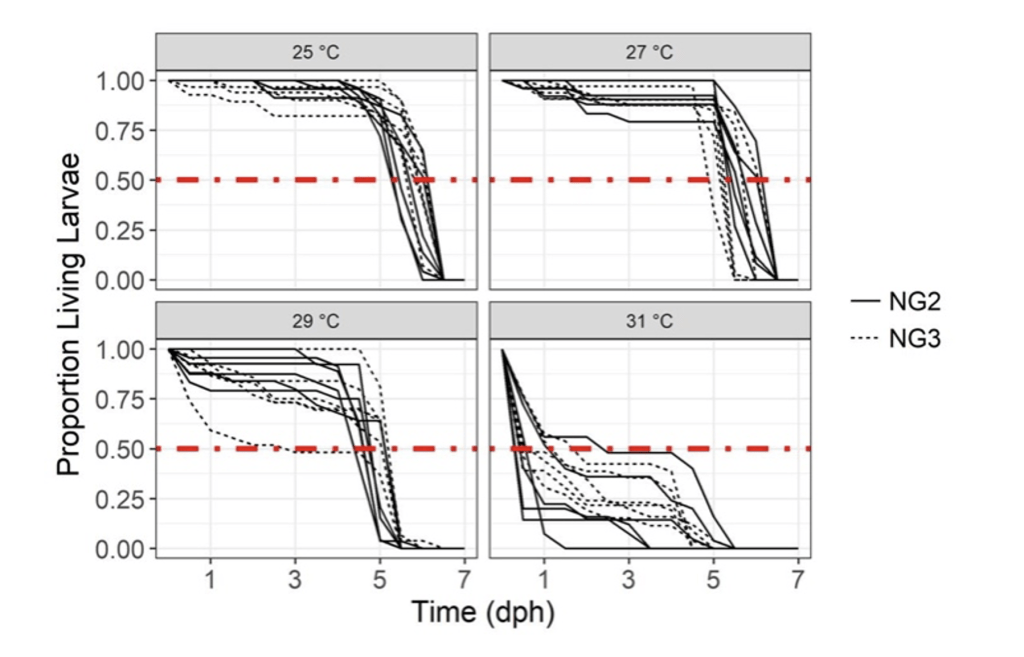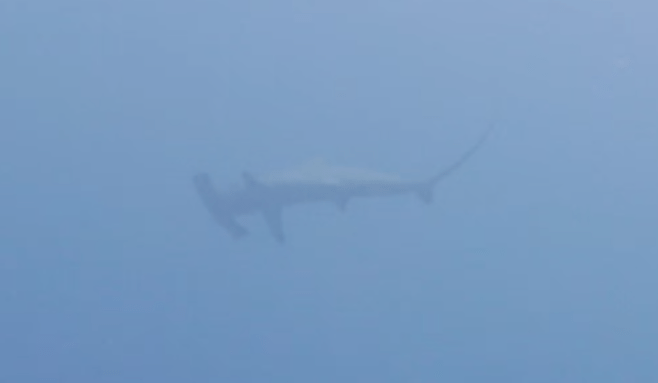Cleaning stations are an incredible, natural phenomenon that occur on coral reefs. During its day to day life, a fish will build up parasites, dead skin, and mucus on it’s body. To clean themselves fish, like a Nassau grouper, will pull up to a cleaning station where smaller fish like gobies, wrasses, shrimp and other small marine life literally eat these parasites and dead skin off the body of a larger fish. It is a lot like a car wash! This is an amazing example of a mutualistic relationship where all species involved benefit. The larger fish gets cleaned while the smaller organisms get a meal. Cleaning stations can be found just about anywhere on a coral reef, but on the spawning aggregation, they are often found in and around large barrel sponges. Click on this link to see some video of a cleaning station that was taken just yesterday on Little Cayman: Cleaning Station
The Nassau Grouper Are Spawning!!
Hello Everyone!
Today, we had our first Grouper Education livestream! I want to thank all the classrooms that were able to join us. Your support and engagement are critical to the success the project. Especially, I would like to thank all the teachers for going the extra mile to make this happen. We all appreciate you so much! If you were unable to attend today’s livestream, you can view it anytime on REEF’s YouTube page. Today’s livestream highlighted a number of scientists working on the project and some incredible footage of the spawning aggregation here on Little. You can watch them here: Spawning Burst 1 Spawning Burst 2
Also, on today’s livestream, we talked a bit about sharks on the aggregation. We definitely see them out there and sometimes they’re able to get ahold of a Nassau, but these are some tough fish. Take a look at this grouper, affectionately known as Lucky, who clearly had a bite taken out of him in the past, but he healed and continues to show up on the aggregation each year! Amazing!
Remember to tune in for our second livestream tomorrow at 10:30am. Go Grouper Moon!
Nassau Grouper Can Change Color!
Hello Everyone!
Nassau Grouper are truly a unique and beautiful fish. Something that really makes them stand out is their ability to change color. Much like an octopus, the Nassau Grouper can change their color in the blink of an eye. Grouper change their color for a number of reasons, such as camouflage. The Nassau can make itself lighter or darker to better blend in with its habitat. Another purpose of its color changing behavior is for communication. The Nassau will often change its coloration when it encounters other Nassau, to let them know they see them. How cool is that?!
Here is a graphic showing the different color phases of the grouper:
Can You Identify This Mystery Fish?!
Hello Everyone!
Grouper Moon 2024 is off to a great start! The team of researchers have all arrived on Little Cayman and are busy counting fish and collecting all kinds of data.
Each day this week, I will be posting interviews, behind-the-scenes photos, videos and more here on the education blog! You can also leave questions or comments on any of my posts and I will respond promptly.
One of the graduate students joining the project this year is Janelle Layton. Yesterday, she was on a dive on Little Cayman and spotted an amazing fish that she caught it on video. Can you identify this beautiful fish? Check out the video below. If you think you know the name of this fish species, leave it in the comments below!
Check back tomorrow when I will begin posting videos from the Nassau Grouper aggregation!
Go, Grouper Moon!
Todd
New Grouper Moon Lesson Plans and Resources!
Hello Grouper Educators!
I want to thank you all for joining last week’s educator workshops. As promised, here are links to all the lessons and resources I shared with you:
Grouper Moon Educator Workshops Are Almost Here!
Grouper Eggs & Climate Change
Hello Everyone!
I hope everyone enjoyed this week’s livestreams! Yesterday, we were able to take everyone out on the DOE’s boat, called the Sea Keeper, to the Nassau Grouper’s spawning aggregation on the west end of Little Cayman. If you were unable to catch our live broadcast, you can always head over to REEF’s YouTube page where each of our livestreams are archived. Check it out: https://www.youtube.com/live/wdyE69rViIw?feature=share
On Monday, I interviewed Janelle Layton a graduate student at Oregon State University. Janelle is studying the impacts of increasing temperatures on the development of Nassau Grouper. The Grouper Moon team will collected fertilized eggs on spawning nights to bring to a lab. At the lab, Janelle raises these eggs at different temperatures and compares developmental patterns and the genetic make up of the eggs and larvae collected.
Last year, divers collected fertilized eggs from 4 different females that Janelle raised in the lab. Eggs from each female were raised into larvae for 6 days at 4 different temperature treatments. 25°C represented historic temperatures on the aggregation. 27°C represents the current elevated temperature, 29°C and 31°C represent the higher temperatures predicted as a result of climate change. Samples from these experiments were preserved for future analyses in another lab. Pictures were taken of the larvae under a microscope so she could measure growth differences between each sample. Janelle has also started extracting genetic information from different samples to see if different females produce more temperature resilient young.
Janelle’s research was inspired by previous work done by Dr. Alli Candelmo and Dr. Lynn Waterhouse, two other scientists in the Grouper Moon Project. This figure shows the proportion of living larvae over time in different temperature treatments. NG2 and NG3 represent young from two different females. Across all 4 temperature treatments, the proportion of living young declines with time. However, the decline happens much faster at higher temperatures like 29°C and 31°C compared to lower temperatures like 25°C and 27°C. We also noticed that as the temperature increases, larvae began dying at different rates. This means it is possible that certain females are able to produce young that can handle higher temperatures better than other females.
If that is the case, the genetics work Janelle is doing proves why it is critically important to keep the Nassau Grouper spawning aggregation as large as possible. With a large aggregation size, there can be a huge increase in genetic diversity, which can allow populations to have all of the tools necessary to deal with the effects of climate change.
Go Grouper Moon!
Todd
Let the Spawning Begin!
Hello Grouper Enthusiasts!
I hope you were all able to join us for today’s third and final livestream from Little Cayman, where we took you for a dive on the Nassau Grouper’s spawning aggregation! The conditions were perfect and we able to see thousands of grouper, a few sharks and much more. If you were unable to join us, you can view all of this year’s livestreams on REEF’s YouTube page. Check out today’s exciting livestream here: https://www.youtube.com/live/wdyE69rViIw?feature=share
On yesterday’s livestream we shared a few video clips from the first night of spawning and I promised to post them here on the blog for all to see. Take a look at this incredible footage! Click the links to see each clip.
Even though today was the last livestream for this year, I will continue to post content here on the blog for the rest of the week. Come back tomorrow and Friday for more videos, photos, and some great behind the scenes glimpses of the research happening here on Little Cayman.
Finally, there had been a student request to see the hammerhead shark we encountered on last year’s Grouper Moon Project, so here you go!
Hammerhead Shark Blog – Large 540p
Go Grouper Moon!
Todd
Counting Nassau Grouper!
Hello Everyone!
Today we had our second livestream from Little Cayman and it was awesome to see all of you who were able to join us! You had such fantastic questions! Today we shared with you some footage of the Nassau spawning, which happened last night. As we discussed, the grouper is able to change its color, very much like an octopus, and it does this for a couple of reasons, such as camouflage. The Nassau can make itself lighter or darker to better blend in with its habitat. The second purpose of its color changing behavior is for communication. The Nassau will often change its coloration when it encounters other Nassau. Here is a graphic showing the different color phases of the grouper:
Also on today’s livestream, we also talked about how the Grouper Moon researchers count all those fish, which is no small task. One way that we are estimating the number of fish is by tagging a set number of grouper with brightly colored tags. Once the tags have been placed on the fish, divers start counting fish. Each time, a diver will count 50 fish and then make a notation of how many of those fish have tags on them. We have several divers out there counting those fish, three times a day, collecting as much data as possible. We can then estimate the total number of fish based on the number of tagged fish we count. Dr. Lynn Waterhouse shared about this process today, but made an error in her math and wanted me to make a correction. Here is a graphic she put together for you explaining the math behind tagging Nassau Grouper:
If you were unable to join us for today’s livestream, do not worry. All of our livestreams are available to watch on REEF’s YouTube page. Here is the link from today’s livestream: https://www.youtube.com/live/1yIZuV9sHmc?feature=share
Finally, be sure to tune in for tomorrow’s third and final livestream where we will take you out on the boat and go underwater to see all those magnificent grouper!
Go Grouper Moon!
Todd
Grouper Moon 2023 is here!
Hello Everyone!
It is so amazing to back on Little Cayman for the Grouper Moon Project! We have a wonderful crew of about 20 scientists and researchers from the Cayman Islands Department of the Environment (DOE) and REEF here working hard to monitor and protect the last viable Nassau Grouper aggregation in the Caribbean. I arrived here Sunday after flying over night from Seattle. The sea conditions have been excellent so far and about an hour after I arrived I was able to join the team for the evening dive on the aggregation. It was absolutely stunning. I saw thousands of Nassau Grouper as well as a number of other species, like Tiger Grouper and Bar Jacks.
Today, we had our first Grouper Education livestream! I want to thank all the classrooms that were able to join us. Your support and engagement are a critical aspect to the success the project. Especially, I would like to thank all the teachers for going the extra mile to make this happen. We all appreciate you so much! If you were unable to attend today’s livestream, you can view it anytime on REEF’s YouTube page. Today’s livestream highlighted a number of scientists working on the project and some incredible footage of the growing aggregation on Cayman Brac as well as footage from aggregation here on Little. You can view it here:
Finally, on today’s livestream, a few of you asked if saw sharks on the aggregation. We definitely see them out there and sometimes they’re able to get ahold of a Nassau, but these are some tough fish. Take a look at this grouper, affectionately known as Lucky, who clearly had a bite taken out of him in the past, but he healed and continues to show up on the aggregation each year! Amazing!
Remember to tune in for our second livestream tomorrow at 11:00am. Go Grouper Moon!

